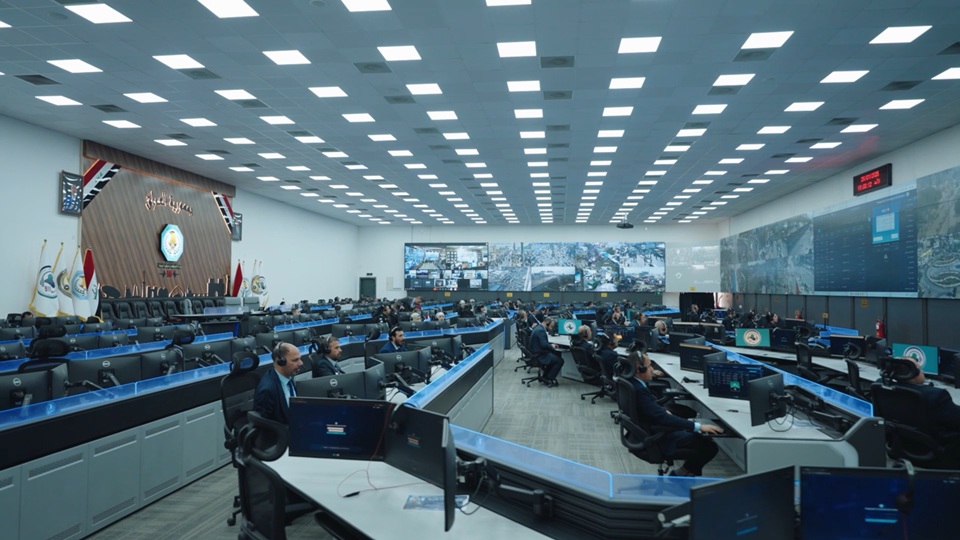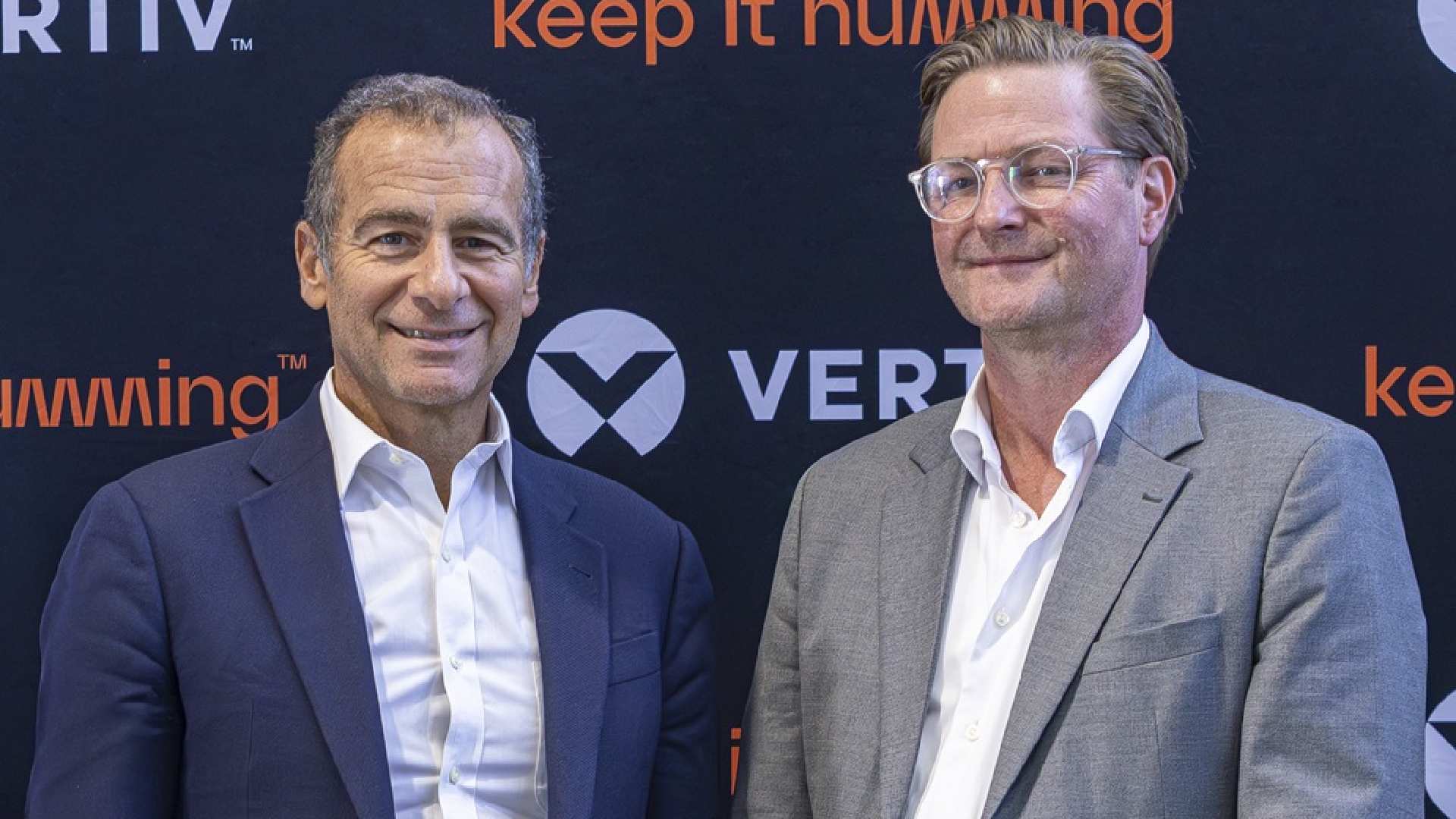Tech News
Iraq’s Ministry of Interior Adopts Hytera SmartOne for 911 Overhaul

Baghdad, Iraq — 12 August 2025 — The Iraqi Ministry of Interior (MOI) has strengthened its emergency response capabilities with the deployment of the Hytera SmartOne Unified Communication Platform. This major project introduces a centralized 911 emergency call center, replacing 26 separate emergency numbers. The move marks a significant step toward a faster and more coordinated public safety system in Baghdad.
A Unified Emergency Response for Baghdad
Previously, emergency services in Baghdad operated through multiple, unlinked systems. However, the Hytera SmartOne platform now integrates DMR and TETRA radios, body camera feeds, and GIS mapping into one connected environment. Consequently, police, fire, and medical services can coordinate in real time. This level of integration significantly improves response times and operational efficiency.
The new 911 center includes over 300 operator seats. Moreover, it supports emergency call intake, case creation, live situational tracking, and multi-agency dispatch. Key features include:
- -Computer-aided dispatch (CAD)
- -Visualized command and mapping
- -Duty and patrol management
- -Incident analytics
- -Mobile police applications
These tools improve situational awareness, optimize resource allocation, and ensure that critical services respond faster to emergencies.
Scalable, Data-Driven Infrastructure
The system uses a microservice-based architecture, which provides high scalability and resilience. Additionally, its data-driven backend offers insights from call logs, incident patterns, and automated alerts. These insights support better decision-making and adaptable strategies.
Since its launch, the platform has processed about 100,000 calls in a single day. This performance proves its ability to handle large-scale emergencies without delays.
National Recognition and Global Impact
The project has earned international attention, being shortlisted for the International Critical Communications Awards (ICCAs) 2025 in the Best Use of Critical Communications in Public Safety category. This recognition underscores the system’s transformative impact on Iraq’s public safety communications.
Prime Minister Mohammed Shia’ al-Sudani called the initiative “a quality move in digital transformation and modern communications, enforcement of security, and the provision of legal and humanitarian services.”
Setting a New Standard for Public Safety
With the Hytera SmartOne platform in place, Baghdad’s emergency services can deliver faster, more reliable, and better-coordinated responses. Moreover, the upgrade serves as a model for other regions—especially those in conflict—seeking to modernize their emergency systems through integrated technology.
Check out our previous post on Sustainable AI Practices Driving Ethical and Green Tech
Tech News
GCC COMPANIES ACHIEVE 30-SECOND PAYROLL PROCESSING WITH 100 PER CENT ACCURACY USING ADVANCED HRMS, REVEALS GREYTHR

Companies across the GCC region have experienced higher workforce management efficiency using advanced AI-powered HRMS, reporting 100 per cent accuracy and stronger compliance with GCC labour regulations, reveals a recent survey conducted by greytHR, the leading full-suite Human Resource Management System (HRMS) platform. Notably, organisations with around 1000 employees could complete their payroll processing in just about 30 seconds using the innovative platform.
The findings point to an exponential shift within the GCC HR landscape, where organisations are embracing intelligent automated HR operations amid evolving labour regulations, hybrid work models, and the rise of multi-country workforces. The company’s data shows that 75 per cent of GCC companies are first-time HR automation adopters, while 24 per cent have migrated from legacy systems, highlighting the ongoing regional transition towards fully digitised, compliance-ready HR frameworks.
greytHR is powering this digital shift through its robust cloud-based infrastructure and AI-powered tools, which simplify the entire hire-to-retire employee lifecycle, from recruitment and onboarding to core HR, leave, attendance, payroll, performance, exit and engagement.
Girish Rowjee, Co-founder and CEO of greytHR, said, “At greytHR, we believe that ‘people’ are the primary pillar of any business. A company’s growth relies on the dedication and hard work of its employees. As a result of this belief, we built our HRMS to make employee lifecycle management simpler, more transparent, and more connected within the HR ecosystem. Our goal is to help organisations reinvent how they manage and support their workforce through intelligent, people-focused automation in today’s digital world.”
Through it’s a highly intelligent and unified system, greytHR has been continuously addressing the region’s distinctive challenges and maximising impact through efficient workforce management.
Sayeed Anjum, Co-Founder & CTO, greytHR, said: “As companies expand across borders and hybrid work models become the norm, HR leaders face issues such as manual payroll errors, fragmented systems and limited automation, which can directly impact compliance, employee satisfaction, and productivity. Our platform is tailored to address these pain points and the region’s unique needs by serving as an intelligent, unified system that simplifies all stages of workforce management. This further aligns with our broader vision of creating measurable impact for companies and transforming the regional HR ecosystem through digitisation.”
He further stated: “Currently, IT & ITeS, Business, and Financial Service sectors lead in HRMS adoption, at 19 per cent, 15 per cent and 10.5 per cent respectively, highlighting the vital role of technology-driven and service-oriented businesses in catalysing the ongoing digital HR revolution.”
greytHR offers built-in compliance features tailored to GCC nations, including automated GPSSA deductions, multi-country payroll capabilities, and real-time analytics. Moreover, its intuitive interface and modular architecture make it accessible to businesses of all sizes, from startups to large enterprises.
The company showcased these advanced offerings at the recent HR Summit & Expo 2025, held in Dubai, highlighting its commitment to supporting the region’s evolving workforce needs. As GCC continues to position itself as a global business hub, greytHR remains steadfast in its efforts to positively shape the future of the regional HR industry.
Tech News
NEW SOLARWINDS REPORT: GEN AI SIGNIFICANTLY DROPS INCIDENT RESPONSE TIME FOR ITSM TEAMS

SolarWinds, a leading provider of simple, powerful, secure observability and IT management software, has released its 2025 ITSM Report, which outlines a clear delineation between Information Technology System Management systems that leverage generative AI (GenAI) in their operations and those that do not. The report analyzed more than 2,000 ITSM systems and more than 60,000 aggregated and anonymized customer data points.
Over the past year, IT teams have moved from experimenting with automation to actively integrating generative AI into their workflows—reshaping how they diagnose issues, resolve incidents, and deliver service. What began as an efficiency play is now transforming team structures and redefining the ITSM experience itself. As GenAI becomes embedded in daily operations, organizations are uncovering new performance gains and insights that signal a broader shift in how IT service management is evolving.
The GenAI Effect: Faster Resolutions, Smarter Service
The data shows that organizations using GenAI in ITSM significantly reduce incident resolution times. SolarWinds analysts examined key AI-driven capabilities—such as automated ticket responses, knowledge article recommendations, and incident summaries—and compared resolution times before and after enabling GenAI. The results revealed:
- The average resolution time before GenAI: 27.42 hours
- The after GenAI enablement: 22.55 hours
- The average time saved per incident: 4.87 hours
- The relative reduction: 17.8 percent
The report also reviewed the resolution times of organizations that have yet to implement GenAI into their ITSM functions. The data showed a much wider gap between GenAI enablement/non-enablement than the group mentioned above:
- The average incident resolution time (non-GenAI customers): 32.46 hours
- The average for GenAI customers post enablement: 22.55 hours
- The time difference: 9.91 hours per incident
- The relative improvement: 30.5 percent
GenAI adopters represent more mature, innovation-driven ITSM operations. This consists of teams already embracing self-service, knowledge management, and automation. Their adoption signals a culture ready to drive broader organizational innovation and transformation.
Reclaiming Time and Producing ROI
When IT teams significantly reduce time spent on manual tasks, they reclaim valuable hours that can be redirected toward strategic initiatives—turning efficiency gains into tangible ROI for the organization. According to the data, which culminated all incidents logged from August 1, 2024 to July 31, 2025, GenAI-enabled organizations saved a cumulative 323,343 hours after GenAI enablement.
“By leveraging GenAI, ITSM teams can reclaim time and resources once spent on routine tasks, enabling them to focus on strategic initiatives that drive real business value,” said Lauren Okruch, Senior Manager for ITSM, at SolarWinds. “Looking ahead, embracing technologies like GenAI isn’t just about efficiency—it’s a strategic imperative for organizations aiming to innovate, stay ahead of change, and transform IT from a support function into a proactive driver of growth.”
Setting ITSM Teams up for Success
SolarWinds is committed to offering ITSM teams AI tooling and other innovative solutions that drive efficiency and improve user experience, including the announcement of the SolarWinds AI agent and other innovations on October 8. The SolarWinds Service Desk Premier Plan offers ITSM customers:
- Automation workflows and runbooks
- AI-powered suggestions and deflection tools
- Enhanced reporting and customization options
- Virtual Agent integration with Slack and Microsoft Teams
Tech News
VERTIV SELECTED TO SUPPLY ADVANCED AI-READY INFRASTRUCTURE FOR DIGITAL REALTY’S NEW DATA CENTER CAMPUS IN ITALY

Vertiv (NYSE: VRT), a global provider of critical digital infrastructure, today announced it will supply next-generation infrastructure for ROM1, Digital Realty’s first data center in Italy with a planned capacity above 3 MW. The agreement extends the comprehensive suite of Vertiv solutions and existing technology implementations with Digital Realty across European locations, including Paris, Madrid, and Amsterdam.
The ROM1 facility will feature advanced cooling and power infrastructure designed specifically for high-performance computing (HPC) environments. The technology implementation includes innovative free-cooling systems that leverage Rome’s climate conditions, and highly energy-efficient power management systems designed to support high-density workloads.
The project will be implemented in phases, with the facility planned to begin operations in 2027. ROM1 will serve as a carrier-neutral facility optimized for AI and machine learning workloads. Its strategic location will establish Rome as a key digital hub, connecting to major Mediterranean cities through fiber networks and submarine cables. Expansion plans also include connectivity in Barcelona, launching in early 2026. The new facility will support the company’s growth as a leader in the Mediterranean, complementing its existing data centers in Marseille, Athens, and Crete.
“Rome is emerging as a crucial gateway for digital infrastructure between Europe and the Mediterranean,” says Alessandro Talotta, managing director, Italy of Digital Realty. “The cutting-edge technologies selected for ROM1 will help establish it as a strategic AI hub, setting new benchmarks for energy efficiency and performance in high-performance computing.”
“The growing adoption of AI applications is driving the need for more sophisticated data center infrastructure,” says Karsten Winther, president for EMEA at Vertiv. “Our cooling and power solutions are built on decades of experience in supporting the most demanding applications and are designed for projected scalability while helping customers meet their efficiency objectives.”
ROM1’s technical innovations include AI-ready cooling systems that adapt to varying workload demands and high-efficiency power distribution designed for intensive computing. The facility incorporates smart environmental controls that respond to real-time conditions and are integrated with alternative energy sources. These technological choices reflect both companies’ focus on supporting advanced computing needs while minimizing energy consumption and environmental impact.
-

 Tech News1 year ago
Tech News1 year agoDenodo Bolsters Executive Team by Hiring Christophe Culine as its Chief Revenue Officer
-

 VAR7 months ago
VAR7 months agoMicrosoft Launches New Surface Copilot+ PCs for Business
-

 Tech Interviews2 years ago
Tech Interviews2 years agoNavigating the Cybersecurity Landscape in Hybrid Work Environments
-

 Tech News4 months ago
Tech News4 months agoNothing Launches flagship Nothing Phone (3) and Headphone (1) in theme with the Iconic Museum of the Future in Dubai
-

 Tech News2 years ago
Tech News2 years agoBrighton College Abu Dhabi and Brighton College Al Ain Donate 954 IT Devices in Support of ‘Donate Your Own Device’ Campaign
-

 Editorial12 months ago
Editorial12 months agoCelebrating UAE National Day: A Legacy of Leadership and Technological Innovation
-

 VAR1 year ago
VAR1 year agoSamsung Galaxy Z Fold6 vs Google Pixel 9 Pro Fold: Clash Of The Folding Phenoms
-

 Cover Story8 months ago
Cover Story8 months agoUnifonic Leading the Future of AI-Driven Customer Engagement























